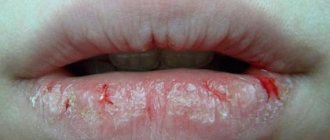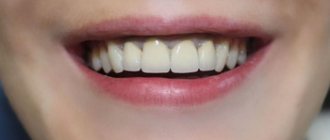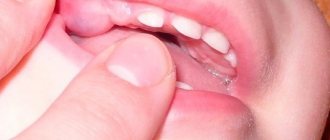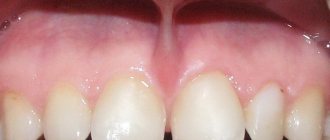Blue lips are a fairly harmless symptom at first glance. Blue lips are most often not perceived as a sign of any disease, but are associated with exposure to low temperatures on the body. It is not possible to unambiguously explain why lips are blue, since a change in their color is not always associated with cold. Blue lips during hypothermia are explained by a narrowing of the blood vessels, and as a result, they are not filled with blood. This reaction is protective - the body provides nutrition to vital organs such as the brain, heart, kidneys, etc.
Blue lips can also be observed with cardiovascular pathology, lack of oxygen, anemia, etc.
Yusupov Hospital is a powerful medical institution that provides medical services at a decent level twenty-four hours a day. Doctors not only know all the reasons why a person’s lips turn blue, but they also know how to examine correctly, without missing important elements. Significant is the fact that specialists have at their disposal all the necessary equipment - the hardware of the Yusupov Hospital puts it at a level higher than other clinics in Moscow. If this symptom is the result of a serious illness that threatens the patient’s life, it is necessary to transfer to the intensive care ward, which in the Yusupov hospital is equipped with mainline oxygen, the patient is connected to a cardiac monitor, and, if necessary, artificial ventilation, defibrillation and cardioversion are performed, both portable and stationary devices. You can make an appointment by phone or online.
Types of cyanosis
Cyanosis is classified into true, central, peripheral and false. The most common are the central and peripheral types, which are difficult to distinguish. Cardiogenic shock and pulmonary edema can be accompanied by two types of cyanosis. In the central form of the disease, hemoglobin derivatives are observed in the blood, and arterial blood is not completely saturated with oxygen.
This type is distinguished by its diffuse nature and maximum degree of severity. Accompanied by weak arterialization of blood and hypoxia. Carbon dioxide fills the arterial blood, which provokes blueness of not only the lips, but also the tongue and the inner surface of the cheeks. The transport function of the blood is disrupted and hypoxia develops. The most common reasons include:
- congenital heart defects that lead to pathological discharge of blood into the area of the arterial rus
- circulatory disorders and respiratory diseases, due to which blood oxygen saturation deteriorates
- slow blood flow in the capillaries: the blood loses oxygen, resulting in impaired hemoglobin concentration
- intoxication, which results in the formation of cyanhemoglobin, methemoglobin, sulfhemoglobin
With peripheral cyanosis, local circulatory disorders are observed due to obstruction of the arteries and thrombophlebitis of the extremities. This appearance is the norm for babies in the first days of life. It is caused by the embryonic type of blood circulation, which is most often observed in prematurely born babies. The symptom intensifies when the child is swaddled, fed, when he cries and shows increased anxiety. During the adaptation process, the blueness of the skin goes away on its own.
Choose a specialist, read reviews and make an appointment with a therapist online
Depending on the origin, the symptom may be:
- respiratory – occurs when there is insufficient oxygen in the lungs. Accompanied by disruption of transport chains, oxygen supply to tissues and other organs. Caused by a complete or partial violation of the movement of air in the respiratory tract;
- metabolic – observed when tissues stop absorbing oxygen in the required quantity;
- cerebral - observed in cases of blood dysfunction, when oxygen and hemoglobin cannot join each other and their delivery to the brain is impaired;
- cardiac – due to insufficient blood supply to organ tissues. Accompanied by oxygen deficiency and changes in the color of the skin of the lips.
The respiratory type is easily eliminated after oxygen therapy is initiated.
A little about breathing, blood circulation and hemoglobin
Hemoglobin, which is found in red blood cells, is a protein that carries oxygen into tissues and carbon dioxide out of them. This is possible thanks to a special iron-containing part of the protein molecule, heme. To carry out its main function, the latter must be present in the amount of 4 molecules - one for each chain that makes up hemoglobin.
In order for hemoglobin to attach oxygen to itself, many conditions are needed:
- There should be a sufficient amount of it. To do this, the body must have enough iron, folic acid, protein, vitamin B12; The erythrocyte membrane should not be damaged and the connections between its subunits should be strong.
- So that the respiratory center, located in the medulla oblongata (this is the final part of the brain that connects to the spinal cord), gives the command to breathe in the correct rhythm, and so that this rhythm is not interrupted by commands generated by the consciousness. So, during a panic attack, a person feels short of air and forces himself to breathe more often than necessary. A person can also consciously reduce the number of breaths (for example, when performing some spiritual practices).
- The breathing frequency set by the brain must be transmitted without obstacles to the respiratory muscles - the diaphragm and intercostal muscles. To do this, the spinal cord in the cervical and thoracic regions should not be pinched, interrupted, or inflamed. The connections between the spinal nerve and the muscle should not be disrupted, as happens with botulism, poisoning with neuroparalytic poisons (including animal bites).
- So that in the respiratory sections of the lungs the membrane through which gas exchange occurs (oxygen penetrates the red blood cell, and carbon dioxide is released into the alveoli, from where it will then be exhaled) has normal properties. It should not be swollen, as with pneumonia, and there should be no fluid in it, as with pulmonary edema.
- There must be a certain level of oxygen pressure to ensure the penetration of oxygen into the red blood cell. This depends on atmospheric pressure, and on the work of the heart, and on the patency of the vessels of the lungs (there may be atherosclerotic plaques, blood clots, fat or air emboli), and on the patency of the bronchi and bronchioles.
- The fluid pressure in the capillaries of the lungs should be low so that the liquid part of the blood does not leak into the tissues. This is possible when the lymphatic vessels are compressed by air (pneumothorax) or by lung tumors.
- In addition, hemoglobin itself should not be occupied by a more tightly held molecule. This can be done by a CO molecule - carbon monoxide, some substances that either oxidize heme iron (this is how methemoglobin is obtained), or add a sulfo group to it, already connected to oxygen.
Violation of at least one of the conditions described above for the normal penetration of oxygen into hemoglobin (except for those associated with anemia - against the background of a small amount of oxygen in the mucous membranes) are the reasons why the lips of an adult turn blue.
In children, additional causes are abnormalities in the development of the heart and blood vessels (“blue” defects). Here, inside the cavities of the heart, arterial, oxygen-rich blood mixes with venous blood, from where oxygen has already been “taken.” Such blood follows its usual path - to every cell of every tissue, but does not provide them with sufficient nutrition, which is why the lips turn blue. “Blue” defects do not appear from birth, since for a couple of weeks fetal hemoglobin still circulates in the baby’s blood - the one that ensured tissue trophism and, accordingly, the growth and development of the child in the prenatal period. Such hemoglobin “knows how to feed” tissues more efficiently, but it is destroyed more quickly when pH and body temperature change. As red blood cells mature and the total blood volume increases, despite the fact that the body experiences oxygen starvation, fetal (fetal) hemoglobin is replaced by that found in the red blood cells of an adult.
The above reasons cause hypoxia of all tissues, which can be noticed primarily by the bluish or purple tint of the lips. If only the upper or lower lip turns blue, this may mean that microcirculation is impaired here due to poor venous outflow or impaired arterial inflow. This may be due to intradermal tumor or inflammation. Less commonly, periodic (in the cold, when swimming) blue lips may be due to the close proximity of the vessels in the orbicularis muscle, from which the lips are “made.”
Symptoms
Dysfunction of the cardiovascular system is accompanied by impaired oxygen delivery to other tissues and organs, and hypoxia develops. Blue discoloration of the skin of the lips is accompanied by fatigue, increased fatigue, headache, insomnia, chest pain, tachycardia, shortness of breath, and disorientation. The symptom develops against the background of:
- seizures, epilepsy
- foodborne diseases
- drug overdose
- anemia, polycythemia
- broncholitis, respiratory failure, chronic obstructive pulmonary disease;
- intoxication with chemical substances: nitrates, sulfonamides, alcohol, sedative medications
- varicose veins, atherosclerosis
Cyanosis appears on walking areas of the body: lips, nose, ears, cheeks, phalanges of fingers. This symptom is not accompanied by pain or discomfort. Therefore, patients most often postpone visiting a doctor.
- The sudden appearance and rapid increase of cyanosis, which is combined with other alarming symptoms, is an indication for emergency medical care;
- when the color of the intermediate zones of the lips changes, doctors talk about serious complications, a threat to the patient’s life;
- In case of regular blue lips, which develop rapidly and are not associated with hypothermia, it is recommended to immediately consult a doctor and undergo a comprehensive diagnosis.
False forms of cyanosis are rare. The bluishness of the skin will not disappear if you press on the skin with your fingers.
What to do if your lips turn blue?
- If blue lips are caused by hypothermia, you should dress warmly and wrap yourself in a blanket. It's good to drink hot tea, but you should avoid coffee, since caffeine constricts blood vessels.
- What to do if your lips turn blue? They will “disperse” oxygen throughout all vessels and tissues through active movement . If you are outside, bring your palms to your mouth and exhale into them - this will warm both your palms and your lips.
- Give up cigarettes, which deprive you of adequate oxygen supply.
- Eat foods rich in iron: liver, chicken yolks, buckwheat, pomegranates, pumpkin seeds, beets, grapes, etc.
Eat right
- If your lips often turn blue, check if everything is okay with your body and undergo a full examination. If the cause of blue lips is some kind of organ dysfunction, the doctor will determine a set of therapeutic measures and necessary medications.
- There are also homeopathic remedies that complement the main treatment, but their use must also be agreed with the doctor.
As for children, if blue lips are accompanied by weight loss, heart murmurs, coughing, difficulty breathing, lethargy, be sure to consult a pediatrician.
Risk factors
People with chronic dysfunction of the respiratory and cardiovascular systems are at risk:
- coronary heart disease
- rheumatic carditis
- congenital heart defect
- atherosclerosis
- cerebral vascular lesions
- pathologies affecting peripheral arteries
- deep vein thrombosis and pulmonary embolism
Predisposing factors that lead to these disorders include hypertension, increased cholesterol levels, a sedentary lifestyle, poor diet, excess weight, and exposure to bad habits.
Causes
Suspected diagnoses that can cause cyanosis of the lips include pulmonary emphysema, upper respiratory tract obstruction, pulmonary embolism, congestive heart failure, pneumonia, pulmonary edema, heart defects (blue type), anemia, alveolitis. The causes of true cyanosis are associated with an increased content of reduced or pathological hemoglobin.
The peripheral form is due to:
- atherosclerosis, arterial thrombosis, diabetic angiopathy, Buerger's disease and other diseases indicating damage to the arterial systems;
- significant cooling of the body, which is accompanied by physiological vasoconstriction;
- vasomotor disorders: neurotic, Raynaud's syndrome, acrocyanosis;
- a decrease in stroke volume of the heart caused by cardiogenic shock, severe heart failure, stenosis of the mitral or aortic valves;
- disorders of the outflow of venous blood: thrombosis, post-thrombotic syndrome, phlebitis affecting the superficial veins;
- gammopathy, erythremia, cryoglobulinemia and other diseases characterized by increased blood viscosity.
False cyanosis occurs under the influence of pathological pigment in the skin. This reaction is associated with medications (amiodarone, minocycline, chlorpromazine), as well as exposure to metals (gold and silver).
Lung dysfunction
In diseases of the respiratory system, this manifestation is associated with an acute disturbance or sharp deterioration in gas exchange in the lung area. The skin of the lips is colored purple-bluish.
Lung dysfunction may be due to:
- formation of blood clots in the pulmonary arteries
- severe pneumonia
- altitude sickness: the symptom appears when a person is at high altitude above sea level
- prolonged stay under water
- exacerbation of chronic obstructive pulmonary disease
Also observed in patients with prolonged bronchial asthma. The formation of symptoms is influenced by gas exchange disorders and slow blood flow in peripheral vessels.
Airway obstruction
Airway obstructions may be associated with the development of:
- croup - an inflammatory disease that affects the upper respiratory tract and is caused by an infectious pathogen
- prolonged convulsions that occur due to tetanus
- holding your breath
- suffocation
- epiglotitis - an inflammatory process that affects the mucocartilaginous valve that separates the trachea from the esophagus
Obstruction can occur as a result of bronchiectasis, accompanied by dilation of sections of the bronchi and accumulation of sputum in them. In this case, there is a risk of bacterial infection.
Disorders of blood vessels and heart
Cyanosis is a common symptom of right ventricular failure and dysfunction of the cardiovascular system in general. Associated with heart failure, congenital heart defects and cardiac arrest.
| Heart defects | The symptom develops due to narrowing of the lumen of the left venous opening:
|
| Left ventricular failure |
|
| Impaired blood flow |
|
Lack of oxygen in the body
Lack of oxygen is often caused by dysfunction of the respiratory system:
- attack of bronchial asthma
- depression of respiratory function caused by poisoning with a toxic, gaseous substance: combustion products, varnishes, paints, solvents, powdery suspensions, tobacco smoke
- infectious diseases
Such a disturbance can also be caused by mountain sickness. With insufficient oxygen supply, congestion develops in the pulmonary circulation, up to pulmonary edema and heart failure.
Physical exercise
Cyanosis can range from slight bluish discoloration to intense purple discoloration of the lips. Temporary cyanosis often accompanies intense physical activity. If the symptom is transient in nature and tends to resolve itself, specific therapy is not required. If your lips are persistently stained blue, even under significant stress, you should consult your doctor. Such a symptom may indicate long-term pulmonary or cardiovascular disorders.
Low hemoglobin
A decrease in hemoglobin levels leads to a purple-bluish coloration of the lips. This condition may be due to:
- extensive blood loss as a result of surgery, traumatic lesions, intense internal bleeding. Cyanosis can occur in women during menstrual bleeding;
- anemia – a violation of the supply and absorption of iron in the body;
- pregnancy - during pregnancy, iron levels decrease.
Blue lips in children
Especially when children have been in the water for a long time or spent a lot of time outdoors in winter, bluish lips often appear. However, as a rule, there is no reason to panic. Instead, it is a sign that the baby is feeling cold, which is a normal reaction of the body to cold ambient temperatures. In cold weather, permafrost in this case has a special protective function for the body, which warns that the body temperature drops too much. This works best by reducing blood flow to the outermost parts of the body (acres) and focusing instead on the vital organs (heart, brain, digestive organs, etc.).
As a result, the blood flows more slowly and releases increased oxygen, making it no longer as usual bright red, but from a certain limit (five grams of deoxygenated hemoglobin per 100 ml of blood) a dark red-bluish color. If the skin is particularly thin in certain areas, such as the lips, this color now appears blue, which is often very noticeable especially in children with fair skin. This blue-colored form usually occurs in parallel areas (fingers, tip of the nose, legs, earlobes, etc.) and is medically called "acrocyanosis."
Because the blood vessels in the skin contract as a result of the cold, typical facial pallor often occurs in addition to raised body hair, so-called goosebumps, and muscle tremors that produce additional heat. In some cases, blue lips can also be a symptom of a serious medical condition, such as a heart defect or pneumonia. Accordingly, especially if the blue color lasts longer even after warming up, when in doubt, always consult a doctor to find out the underlying cause.
Which doctor should I contact?
At the first time the skin of your lips turns blue, it is recommended to consult a therapist. In the future, consultation with a cardiologist, hematologist or pulmonologist may be required. It is not recommended to try to treat the symptom yourself, as this can aggravate the course of the underlying disease and provoke complications. The sooner the patient receives consultation from an experienced, qualified specialist, the more favorable the prognosis.
Choose a specialist, read reviews and make an appointment with a therapist online
Diagnostics
To diagnose cyanosis, vital signs such as pulse, respiration, temperature, and blood pressure are assessed. The patient is asked about the presence of a cough, the regularity of colds, and the use of medications. The doctor takes into account the medical history (presence of heart defects, rheumatism, respiratory pathologies), conducts a general examination, pays attention to the condition of the throat, pharynx, lymph nodes, and the severity of cyanosis. Conduct objective research:
- pulse oximetry
- gasometry
- general blood analysis
- ESR
- spirography
- bronchoscopy
- general urine analysis
- blood test for glucose, inflammatory markers
- chest x-ray
- computer and magnetic resonance imaging
- also take into account the body's response to the oxygen therapy involved
Depending on the suspected underlying disease and the diagnostic results obtained, an electrocardiogram, echocardiography, or computed tomography of the chest may additionally be recommended. Pathological hemoglobins are also determined.
Treatment
Treatment of cyanosis involves addressing the underlying disease causing the symptom. To eliminate cyanosis, use an oxygen mask. This method leads to blood saturation with oxygen and restoration of normal hemoglobin levels. For chronic diseases, oxygen therapy is ineffective. Patients with congenital heart defects experience constant cyanosis, which can only be eliminated by surgery.
Drug treatment is used to normalize the supply and transport of oxygen to organ tissues and the brain. The doctor recommends drugs whose action is aimed at enhancing cardiac and pulmonary activity, improving the rheological properties of blood, and normalizing blood flow through the vessels. The doctor may recommend taking:
- anticoagulants: Fragmina, Warfarin
- respiratory analeptics: Etimizole, Cititon
- cardiac glycosides: Korglykon, Strophanthin
- bronchodilators: Buroduala, Salbutamol
- antihypoxants: Trimetazidine, Preductal
- cardiac glycosides: Korglykon, Strophanthin
- neuroprotectors: Cerebrolysin, Piracetam
- vitamin preparations
Medicines are not intended for self-medication. Only a doctor can select the dose, frequency and duration of medication, as well as the general treatment protocol. If the recommended treatment regimen does not have the expected effect, you should consult your doctor again. For heart defects, surgical intervention is indicated.
Prevention
To prevent cyanosis of the lips, it is recommended to promptly treat the underlying diseases and lead a healthy lifestyle. At the first signs of a disorder, refrain from self-medication and consult an experienced doctor. Prevention of cardiovascular and respiratory diseases (the main diseases causing symptoms) is aimed at:
- diet correction: preferable plant-based, whole grain foods, rich in whole oils, fiber, protein
- normalization of sleep
- quitting smoking and drinking alcohol
- introduction of moderate physical activity: daily walks in the fresh air, swimming, yoga, therapeutic exercises
- compliance with the work and rest schedule
- reduction of psycho-emotional stress
Self-medication may not have the desired effect and provoke the development of complications.
Cyanosis is one of the signs that is observed in patients with diseases of the blood, heart and blood vessels, and respiratory system. In order to prevent it, it is recommended to follow all doctor’s recommendations during therapy. Take medications regularly and without skipping, attend physical therapy sessions. The patient is recommended to be under constant supervision of specialists until there is a lasting improvement in overall well-being. It is important to direct efforts to prevent diseases that cause blue lips and to lead a healthy, active lifestyle.
Why does the lower or upper lip and the corners of the lips turn blue?
- If only one lip turns blue , this may indicate that blood microcirculation . This may occur as a result of the appearance of an inflammatory process or the appearance of a tumor.
- The cause may be a mechanical injury to the lip - bruise, bite, etc.
- In infants, the lips (usually the lower one) turn blue, possibly if their sucking reflexes have not yet fully developed. In this case, the child, having eaten, can suck his own lip.
- The corners of the lips turn blue due to disruption of the heart or lungs. This is often a characteristic symptom of respiratory diseases: bronchitis and asthma, laryngitis and pneumonia.
Part turns blue











